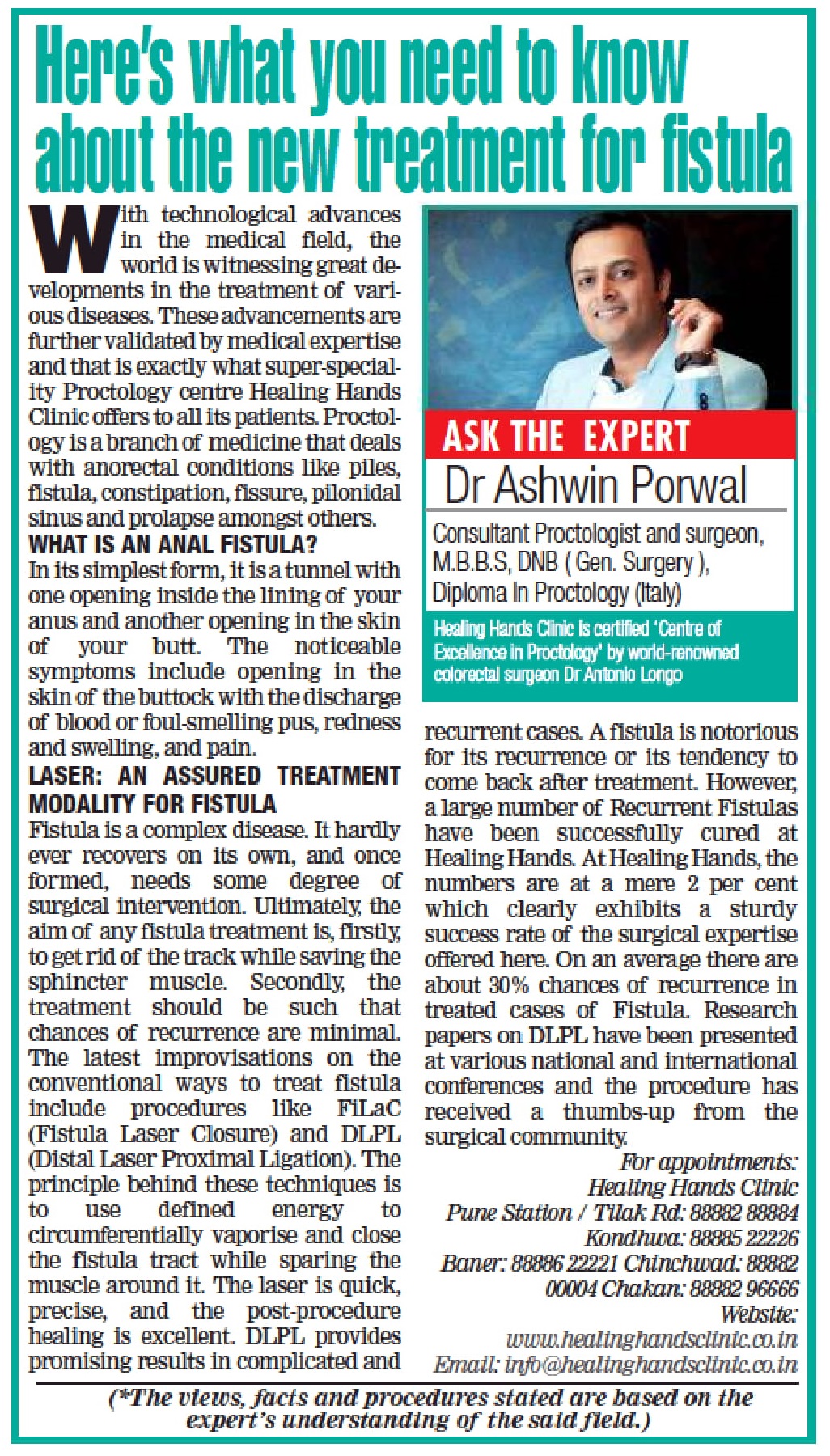Fistula, a painful and often uncomfortable condition, requires expert medical attention for proper diagnosis and treatment. If you’re suffering from a fistula, finding the right proctologist in Mumbai is crucial to ensure effective treatment and recovery. At Healing Hands Clinic, we understand the importance of choosing the right doctor who can offer specialized care. In this guide, we’ll help you navigate the process of finding the best proctologist for fistula treatment in Mumbai and highlight some of the top doctors at Healing Hands Clinic.
What is a Fistula?
A fistula is an abnormal connection between two organs or vessels, often occurring near the anus. The condition can cause discomfort, pain, and infection if not treated properly. Fistulas are usually treated through surgery or non-invasive procedures. Therefore, it’s essential to consult a skilled proctologist who can determine the most appropriate treatment for your condition.
Why You Need the Right Proctologist
Choosing the right proctologist is key to getting the best care for your fistula. A qualified proctologist will:
- Accurately diagnose the type of fistula.
- Suggest personalized treatment options, such as minimally invasive procedures.
- Ensure a smooth and quick recovery process.
- Offer expert advice and care throughout the treatment journey.
With the right proctologist, you can expect effective results and long-term relief from fistula symptoms.
Top Proctologists for Fistula Treatment in Mumbai
If you’re looking for a skilled proctologist to treat your fistula, Healing Hands Clinic is one of the leading centers in Mumbai. We have a team of highly experienced and qualified doctors specializing in advanced fistula treatments. Here are some of the top proctologists you should consider:
1. Dr. Sayali Kadam
Dr. Sayali Kadam is a renowned proctologist with a reputation for providing personalized care for fistula patients. With years of experience in advanced surgical techniques, Dr. Kadam ensures that patients receive the best possible care for their fistula conditions. Her expertise includes both minimally invasive and traditional surgical treatments, making her one of the leading experts in the field.
2. Dr. Nehal Patel
Dr. Nehal Patel is a highly skilled consultant surgeon specializing in the treatment of anorectal diseases, including fistulas. She uses the latest technologies and techniques to ensure minimal discomfort and quick recovery for her patients. Dr. Patel’s holistic approach focuses not only on surgery but also on post-treatment care and prevention of recurrence.
3. Dr. Girish Hatalkar
With years of experience in proctology, Dr. Girish Hatalkar is recognized for his expertise in treating complex fistula cases. His extensive knowledge of modern surgical techniques, including laser treatments, has helped many patients find relief from their fistula problems. Dr. Hatalkar is dedicated to providing long-lasting and effective treatment for all anorectal issues.
4. Dr. Akash N. Bagade
Dr. Akash N. Bagade is a leading proctologist at Healing Hands Clinic, known for his compassionate approach and exceptional skills in fistula treatment. His commitment to offering the best care, from diagnosis to recovery, has earned him a trusted reputation. Dr. Bagade specializes in advanced techniques, including laser surgery, ensuring minimal pain and faster healing times.
What to Expect When Visiting a Proctologist for Fistula
When you visit a proctologist at Healing Hands Clinic, you can expect a comprehensive evaluation of your condition. Here’s what typically happens during your consultation:
- Medical History Review: Your doctor will begin by reviewing your medical history and any symptoms you’ve been experiencing.
- Physical Examination: A physical examination will help the doctor determine the severity and type of fistula.
- Diagnostic Tests: If needed, the doctor may recommend diagnostic procedures such as ultrasound or MRI to assess the condition further.
- Treatment Plan: Based on your diagnosis, your doctor will recommend the most appropriate treatment plan, whether it’s surgical or non-surgical
Why Choose Healing Hands Clinic?
Healing Hands Clinic is one of the leading centers in Mumbai for treating fistula and other anorectal conditions. Our team of expert proctologists uses state-of-the-art technology and techniques to offer minimally invasive treatments that result in faster recovery and less pain. With a patient-centered approach, we ensure that each individual receives the highest standard of care.
Conclusion
Fistula treatment requires the expertise of a highly skilled proctologist to ensure the best outcomes. If you’re in Mumbai and looking for the right doctor, consider consulting the experts at Healing Hands Clinic. Dr. Sayali Kadam, Dr. Nehal Patel, Dr. Girish Hatalkar, and Dr. Akash N. Bagade are some of the best in the field and offer personalized treatment options tailored to your needs.
Don’t let a fistula affect your quality of life. Schedule a consultation today with one of our top proctologists and take the first step towards healing!










